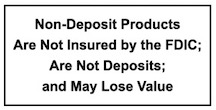08/20/2024: Scam Prevention
Did you know the Federal Trade Commission reported that consumers lost nearly $8.8
billion to scammers in 2022? This amount is up 30% compared to 2021.

Potential scams could look like:
- Emails asking you to click on links or attachments, that have several typos and grammatical errors, or that ask you to fill out some type of form asking for personal information.
- Texts asking for your debit card pin number, your social security number, or to share a one-time code.
- Phone calls where the scammer is pushy, uses threatening language, or asks for your birthday or any other personally confidential information.
Common types of scams include identity theft, phishing, and malware or ransomware attacks. It could also include scammers gaining access to your account and using it to make fraudulent transactions.
To prevent being scammed, avoid clicking on any suspicious links, don’t reply to the
sender, and ignore any requests the sender may make. Also, do not hand out any personal information. Be skeptical! Just because a phone number may have the same area code as you, does not mean the caller is trustworthy.




